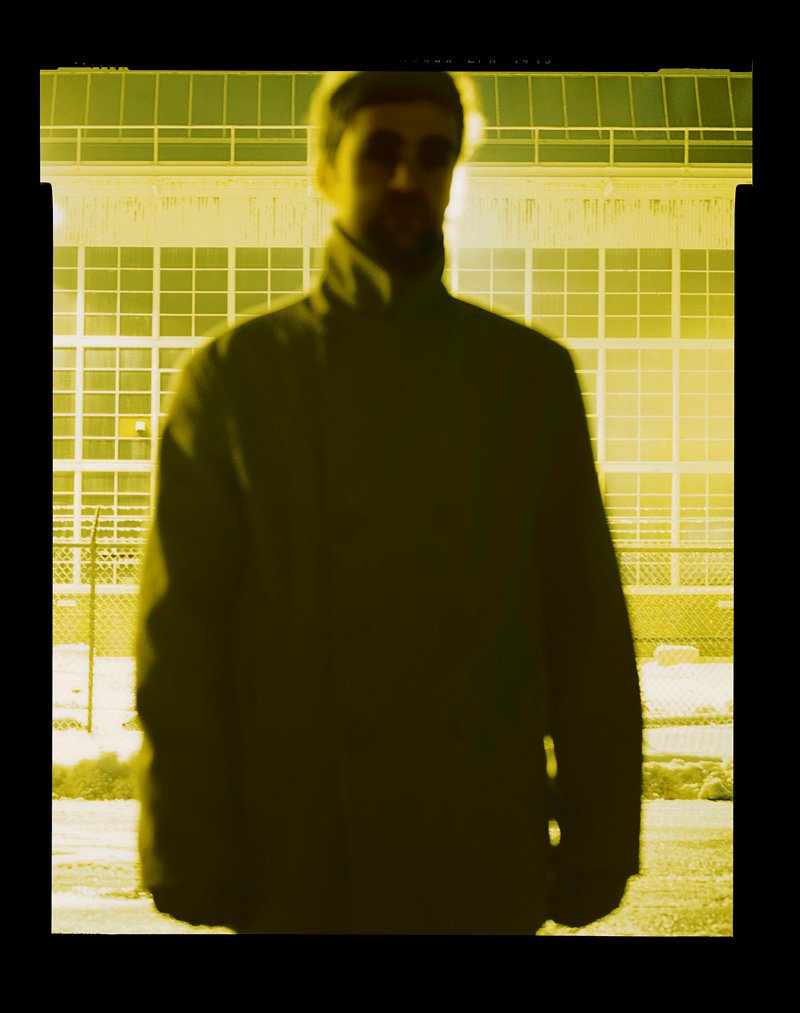
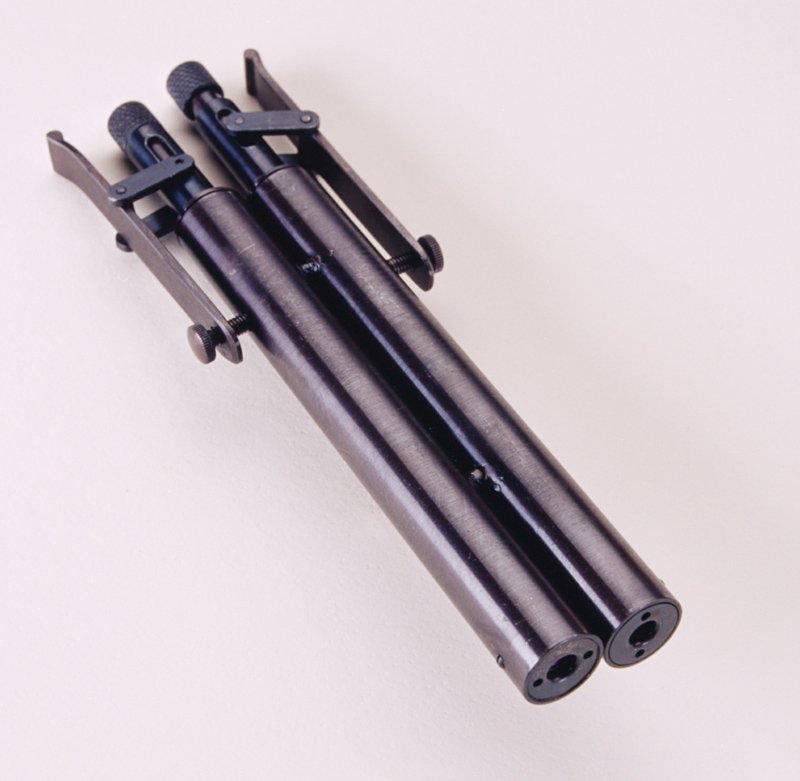
A gas gun from the International Spy Museum.

A lipstick gun from the International Spy Museum.
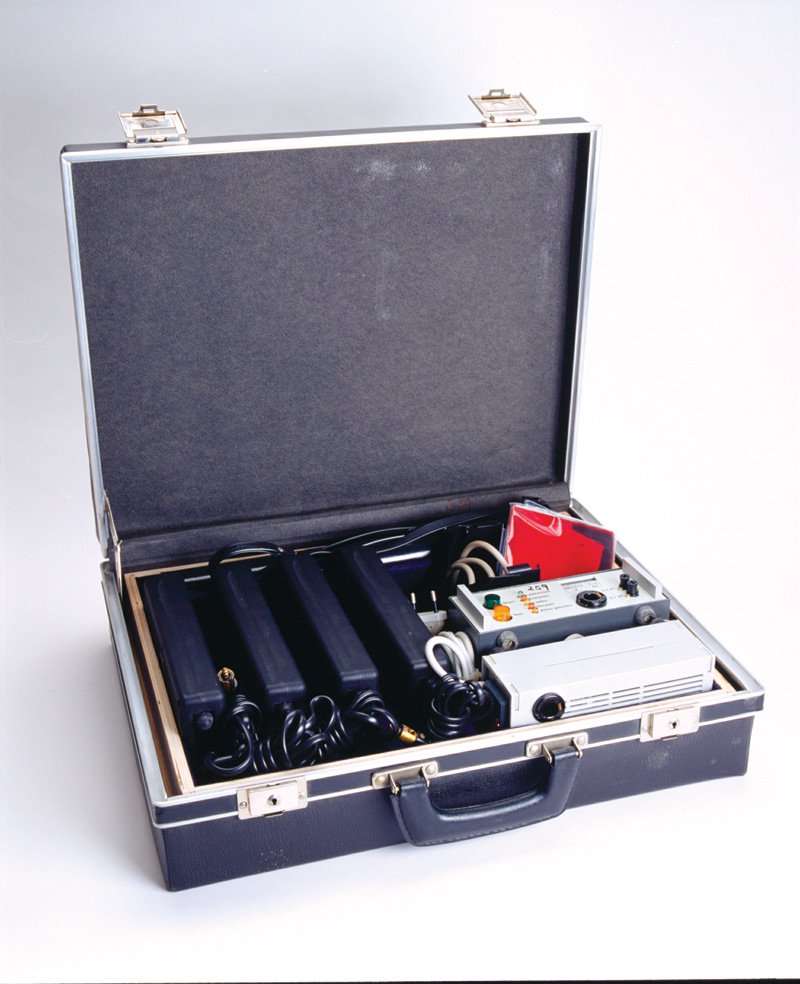
A secret writing kit from the International Spy Museum.
Espionage in the Old Dominion.
Photography by Joshua Carpenter
Virginia is always thought of as a conservative state. A staid state. A place where fun-loving gentlemen sit on pretty plantations and grow tobacco and talk about the good old days.
It’s a place of beauty and history, yes. But intrigue? All the good spy movies are set in Le Carré-like locales like Trieste, Budapest, Hong Kong and Amsterdam. Even in the U.S., it’s pretty much New York, Miami, Washington and Honolulu. The ultimate arbiter is 007 James Bond. While the MI6 super spy has visited lots of locales, Virginia, as far as we know, has never had an on-screen visit.
In the popular mind, Virginia has an intrigue level about as great as say Norway or Mexico — far greater than a country like Canada or a state like Indiana, but not up with places like Morocco, Lebanon and Monaco.
But in reality, Virginia crawls with intrigue, a result of geography, both its location next to Washington, D.C., and its luck of having the world’s greatest natural harbor, Hampton Roads. There are lots of juicy targets here for spies to find out about, everything from the Defense Department’s Pentagon and CIA’s Langley headquarters to Norfolk Naval Base, Newport News Shipbuilding and Yorktown Naval Weapons Station. The list could go on and on. Scattered about the state are dozens of military contractors. Much of the nation’s Internet traffic routes through the Dulles corridor.
The War on Terror has even had a Virginia angle. The American Taliban John Walker Lindh (more turncoat than spy but nefarious nonetheless) first saw the Alexandria courtroom of Judge T.S. Ellis. Yasser Esam Hamdi, the American-born Saudi accused of being a Taliban, was moved from Guantanamo, Cuba, to Norfolk’s Naval Station Correctional Center. The prison sits in an unsecured area of Naval Station Norfolk, just a stone’s throw from the students at Camp Allen Elementary School. And in 2002, Gov. Mark Warner had to preside over the execution of Aimal Khan Kasi, a Pakistani, even as there were fears of retaliation.
Indeed, if there was a place where spies would need to be, Virginia would be it.
This is where the action is.
So here we go with Virginia Living’s overview of the turncoats and spies among us, past and present. While having danger lurking around every corner and creek might not always be nice, it sure is exciting.
Virginia’s Cloak-and-Dagger Headquarters?
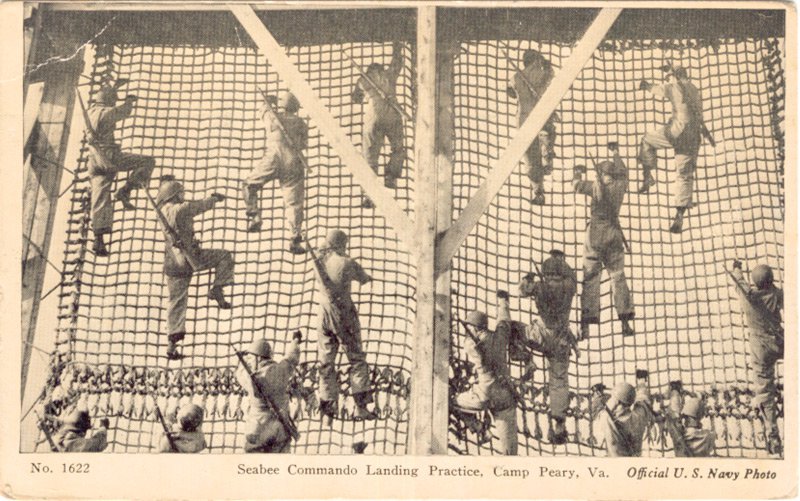
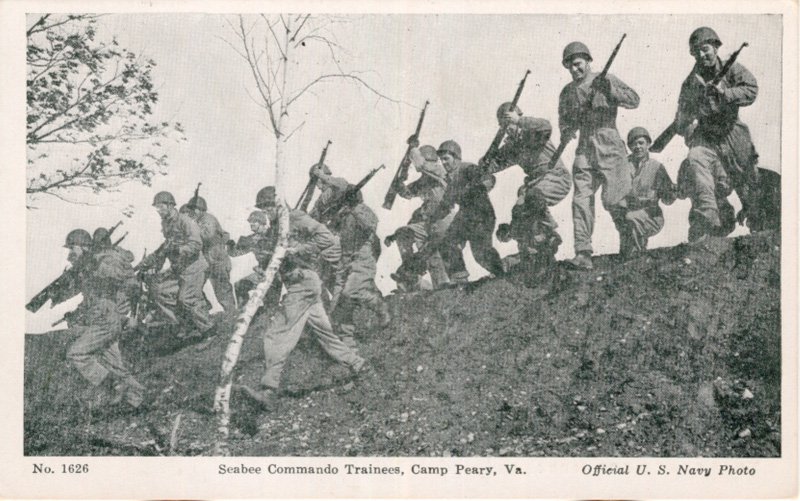
Most who live near Camp Peary, the mysterious barbed wire-ringed preserve just north of Williamsburg, go about their lives rarely questioning the goings-on within. Accustomed to restricted areas and military secrecy — York County is also home to the 10,624-acre U.S. Naval Weapons Station — locals hardly register the occasional apocalyptic shudder emanating from beyond Peary’s fence, the erratic bursts of what appear to be machine gun rounds and artillery fire, the random cavalcade of shiny black Suburbans entering and exiting the gate. Their quiet acceptance is part patriotism, part ritual, part indifference and, let’s face it, part exhaustion. They’ve asked the questions, and they can’t get an answer either.
“We neither confirm nor deny its existence.”
That’s the friendly but official position of the CIA’s press and media liaison, Chase Brandon, if you simply ask whether or not they’re running a spy training facility at Camp Peary. (Try to approach the heavily guarded gate and you might get as far as “Excuse me, but …” before being redirected.) What is officially known is that the enormous pine-wooded tract measures 9,275 acres and is listed among the assets of the Navy. But question the Navy and they’ll refer you to the Department of Defense, who, if interrogated, might go so far as to divulge that it is an “Armed Forces Experimental Training Activity.” Don’t get too excited, Sherlock; that much is printed on the sign. (You get the feeling they’re having fun with this.)
Prior to becoming whatever-the-heck-it-is (we’ll play along), Camp Peary enjoyed a less covert assignment. Established in the early days of World War II, the base initially served as a training ground for Navy construction battalions, the so-called Seabees. But by 1944 Seabee activity had ground to a halt and the camp was converted to a basic training facility — some reports claim that German POWs were also being housed here. At the war’s end the Navy abandoned the property, leaving it in the capable hands of the state of Virginia, which moved in and established a seedling nursery. In 1951, after Virginia’s General Assembly failed to pass legislation that would have allowed formerly (and somewhat rudely) evicted residents, like those from the now ghost town of Magruder, to purchase their Camp Peary property back, the Navy returned, announcing that the base was henceforth closed to the public.
For 21 years no one had reason to question what occurred on the base — save one time in 1961 when the government called for bids on constructing six reinforced-concrete buildings, each fitted with steel doors and X-ray protection. But in 1972, things changed. The Virginia Gazette, a then weekly Williamsburg newspaper, made the disturbing claim that Camp Peary was being used by the CIA to train agents in assassination techniques and guerilla warfare. The CIA flatly denied the charge, but the damage was done. Camp Peary was now on the map.
Aerial photographs of the facility, available to the public, confirm a much-to-be-expected, college- like setting, with large expanses of grass, dorms, a dining hall, a gymnasium … a mock prison, a firing range, a private airstrip. The Virginia Historic Landmarks Commission maintains files (with pictures) of a variety of the structures within the base, from the plain 1950s river cottages (which unfortunately challenge the popular myth that military brass use the base as a luxury retreat) to the historic but now boarded up home Porta Bello, the one-time summer retreat of Lord Dunsmore, Virginia’s last royal governor. But Camp Peary’s allure, its mystique, has less to do with what’s actually in there and more to do with what they’re doing in there.
Over the last 30 years, news reports and bestselling tell-alls from former CIA agents like Victor Marchetti, Phillip Agee, Ralph McGehee and Frank Snepp have added to the mystery and intrigue of the formerly low-key facility. Civilians now have access to once-secret agency parlance—Camp Peary, for instance, is referred to as “The Farm” by CIA insiders. Students at “The Farm,” called “career trainees,” are said to take classes in such handy subjects as lock picking (course name “Picks and Locks”) and cracking open mail “Flaps and Seals”, and more ominous sounding coursework like “Outward Bound with Guns,” where students apparently wade through swamps for days avoiding human predators. Trainees learn how to work a cocktail party, lose a tail, set up a pick-up or a drop-off, photograph documents, infiltrate hostile governments and rescue hostages. And in that mock prison, students study “Jail Sequence” reportedly by being locked up, interrogated, and denied food and water for days.
Of course, that’s all hearsay.
Yet it’s nothing new for hearsay to find its way to the silver screen. In 2003, Disney’s Touchstone Pictures released The Recruit (formerly called The Farm), staring Al Pacino and Colin Farrell. Set at the “hidden” Camp Peary, the film is loosely based on the life of former Camp Peary instructor-turned-mole Harold Nicholson, who in 1997 was convicted of selling secrets to the Russians. But, Hollywood aside, consider it the ultimate breach in national security that on the heels of this studio release came BAM! Entertainment’s Game Boy Advance version of The Recruit, which, as one online reviewer put it, allows you to “shoot enemies, plant bugs, knock people unconscious, and undertake snipping missions.”
So much for keeping a lid on this.
Spyland’s Attic
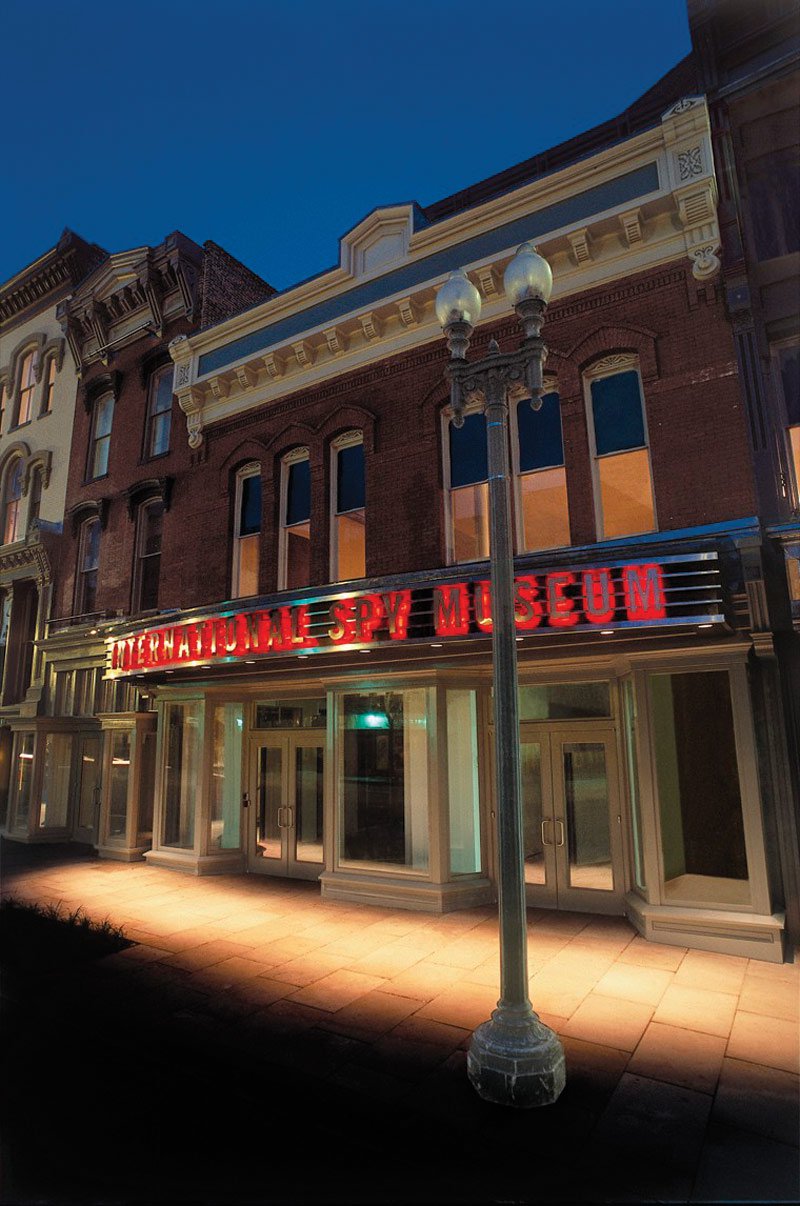
The International Spy Museum.
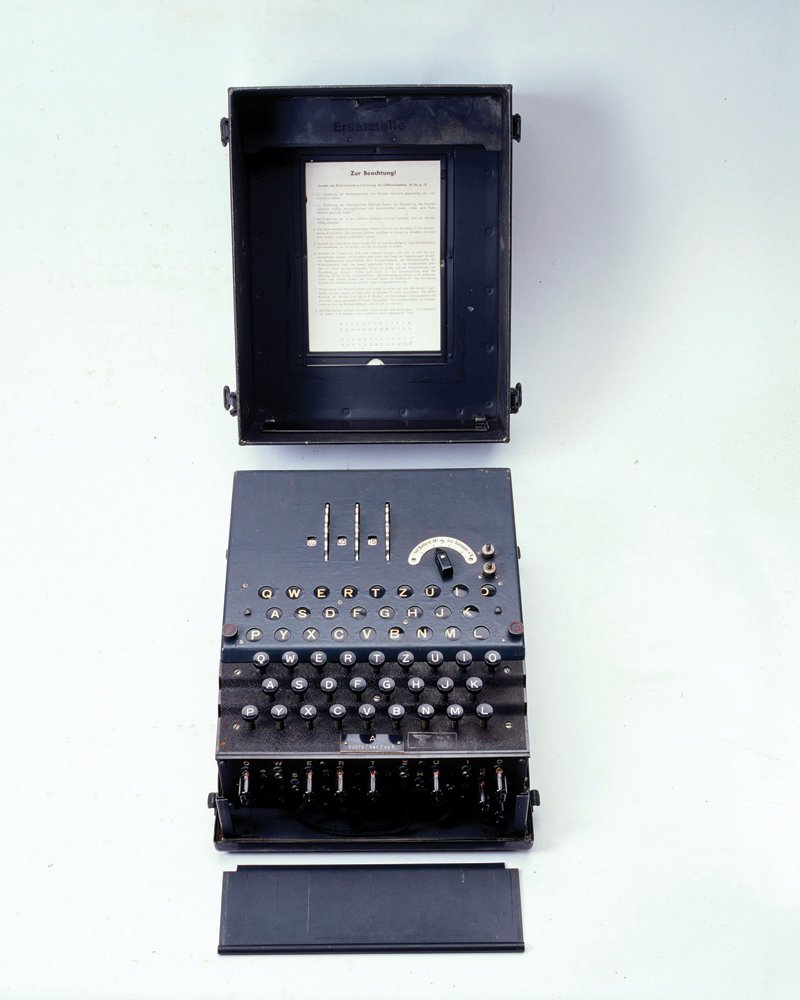
An Enigma machine from the International Spy Museum.
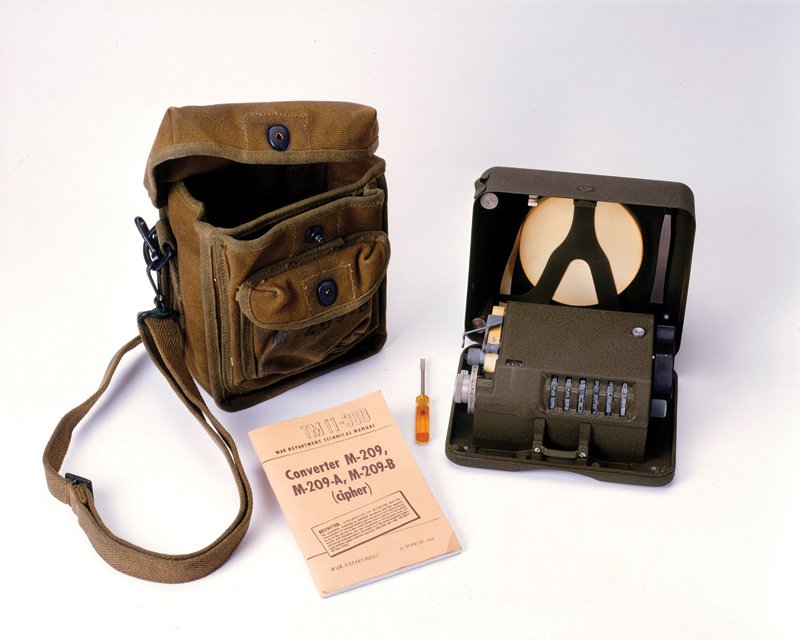
A cipher kit from the International Spy Museum.
You know you’re going to be in for adventure at the new International Spy Museum when you visit their Web site. The home page of the first public museum in the United States solely dedicated to espionage, and the only one in the world providing a global perspective on this nearly invisible profession, features several Mission: Impossible teletype-ish messages: “Assume nothing,” or “Trust no one,” or “Anyone could be listening.” One word comes to mind — cool!
And cool it is. Open only since July 2002, the museum’s F Street entrance is about as inconspicuous as an old speakeasy. From the moment you step into the tiny lobby, you know you’re in for a very different D.C. museum experience. To enter the exhibits, you must ride an elevator up to the third floor, where you are instructed to choose a “cover” or new identity from a wall full of possibilities. There you wait your turn in the “briefing room,” where a video informs visitors about the concept of espionage. Following the film, double doors open to exhibits displayed along a warren of narrow passageways with shiny industrial steel and metal surfaces.
First up are the elements of assembling a successful cover identity and tools for gathering intelligence. Hands-on computer activities allow visitors to test their mettle as they try to locate dead drops (fake rocks, tree stumps, soda cans and other inconspicuous containers used for transferring information), surveillance systems and secret signals in photos. Fifty years of spy technology developed by agencies such as the CIA, OSS and KGB are chronicled in displays of microscopic bugs, cameras, lock picks, weapons and other devices, and videos detail the clever ways they are hidden. Invisible ink! Lipstick pistols! There’s even an Aston Martin DB5 Bond-mobile that comes to life with lights, rotating license plates and elevated bullet shield. For those who don’t mind crawling, there’s a heating duct that visitors can climb through to see how easy it is to eavesdrop from above.
Phase two of the museum, “The Secret History of History,” is a series of galleries tracing the history of spying from biblical times to the early 20th century. Visitors can watch short video vignettes of historical figures from George Washington to Harriet Tubman to Joseph Stalin, all of whom used secret information to achieve their goals.
The final, third floor exhibit area covers events around World War II, including Pearl Harbor and D-Day. One particularly impressive exhibit uses a wall of photographs, lit from behind, that show the path of deceit that led to the U.S. losing the atom bomb secret. As the secret is finally lost, the room lights up in orange and the floor rumbles. Creepy and effective.
Back on the first floor, the historical tour continues with the “War of the Spies,” a series of exhibits that depict espionage activities behind the Iron Curtain, in a divided
Berlin and in the Soviet Union. Succinct profiles of famous spies, a goodly number of whom are Virginians (aren’t we proud?) including the recently nabbed Robert Hanssen, are presented. The tour ends in a simulated Ops Center, where a former intelligence officer is available to answer questions and computers connected to satellites allow visitors to zero in on their own towns, and, if they live in a high-resolution area, their own backyards. As with any museum anxious for those retail sales, the only way to get out is through the shop. And that’s OK because the shop is also cool — shelves are packed with gadgets, disguises, spy music CDs, Bond stuff, books, etc. If you’re hungry, the Spy City Café is adjacent to the museum; it offers fresh sandwiches (even PB&J), salads, soups and hot entrees like lasagna.
A visit to this museum is a must for anyone who is intrigued as to how spies spy and, in doing so, shape history and impact world events.
SpyMuseum.org, 10 a.m.-6 p.m. every day; Adults: $21.95, Seniors: $15.95, Children 7-11: $14.95, Children under 6: free.
Spy Sites of Virginia
Virginia is home to dozens of spy-connected sites, some real, some rumored. Here are a few:
1. LANGLEY – Spook Central, CIA Headquarters.
2. CAMP PEARY – Virginia’s version of Area 51. Originally a Naval Construction Battalion training base and a home away from home for German POWs during WWII, Camp Peary is the supposed training academy for CIA operatives even though a search of the CIA Web site reveals no reference to this base.
3. QUANTICO – Home of the Marine Corps Intelligence Activity, the FBI Academy and the Drug Enforcement Agency Training Academy.
4. VINT HILL FARM – From 1942 to 1993, Vint Hill Farm in Warrenton housed various intelligence gathering and research organizations of the U.S. intelligence apparatus. In 1993 the base was closed and is currently an office park and planned unit development.
5. NATIONAL GROUND INTELLIGENCE CENTER – Located in a nondescript building near the downtown mall in Charlottesville, the National Ground Intelligence Center analyzes the capabilities of foreign ground and security forces.
6. MOUNT WEATHER – A few miles from Berryville, Mount Weather is ostensibly the home of the federal “shadow government.” In case of nuclear or terrorist disaster, the Federal Emergency Management Agency and residents of this facility would keep the wheels of the U.S. government turning. Rumors abound that under the earth is a huge self-contained city with its own mass transit system.
7. MOUNT PONY – Originally operated by the Federal Reserve System, this semi-underground facility near Culpeper held tons of cash to be used to reinvigorate the American economy in the event of a nuclear war. The bunker is now a repository for the film archives of the Library of Congress.
8. CONSERVATION AND RESEARCH CENTER – Until 1973 the State Department used this hilltop near Front Royal as their Emergency Relocation Site. Currently the National Zoo uses the center for breeding and research of endangered wildlife species.
9. TROPOSCATTER RELAY STATION – One of many sites the Federal Government used to ensure secure communications during the Cold War, this facility on Sears Mountain near Buckingham is now abandoned … maybe.
State of Spies
In the world spy pantheon, there are more than a few Virginians. Judging by this list, we’re a rather sneaky lot!
Spying in Virginia didn’t start with John Walker or the CIA. Virginia has a rich history of spying for friend and foe alike, starting from the state’s very beginnings. The ships that carried the first colonists to Jamestown may have also carried a cargo of Spanish spies. Here are some spies with significant Virginia connections.
Robert Philip Hanssen
SPIED FOR: U.S.S.R.
VIRGINIA CONNECTION: From 1981 to 1985 and again from 1987 until his arrest, Hanssen lived in Vienna. He arranged to pass information to his KGB handlers at various dead drop locations in Northern Virginia.
DOSSIER: Beginning in 1985, and possibly as early as 1979, Hanssen passed secrets to Moscow, including information on the identities of Russians spying for the United States, as well as information on other classified programs. He revealed to the KGB that the FBI was investigating Foreign Service Officer and alleged spy Felix Bloch, leading to the compromise of that investigation. In return for his spying, Hanssen received over $1.4 million in cash and diamonds.
ULTIMATE FATE: In 2001 Hanssen confessed to 15 counts of espionage and conspiracy charges in order to avoid the death penalty. He is currently an inmate at the federal penitentiary in Florence, Colo.
Aldrich Ames
SPIED FOR: U.S.S.R.
VIRGINIA CONNECTION: Arrested near his home in Arlington.
DOSSIER: While head of the CIA’s counterintelligence branch of the Soviet Division, Ames betrayed at least 30 agents and over 100 operations. At least 10 of the agents whom he betrayed are believed to have been executed. Ames and his wife Rosario received over $2.7 million in the nine years that he worked for Moscow.
ULTIMATE FATE: Ames pleaded guilty and received life without possibility of parole. His wife Rosario received five years under a plea agreement. He currently resides at the Allenwood Federal Correctional Institute in Pennsylvania; Rosario served 63 months.
Robert M. Gates
SPIED FOR: United States as Director of Central Intelligence
VIRGINIA CONNECTION: Received his undergrad degree from William and Mary.
DOSSIER: Gates was appointed to head the CIA in 1991 and served until 20 January 1993. He joined the CIA in 1966 and spent almost 27 years as an intelligence professional. Gates is the only career officer in the history of the CIA to rise through the ranks from entry-level employee to director.
ULTIMATE FATE: Gates, who holds a Doctorate in Russian and Soviet history from Georgetown University, was dean of the George Bush School of Government and Public Service at Texas A&M University until 2001, then served as the Secretary of Defense from 2006-2011. He currently serves on several corporate boards.
John Walker
SPIED FOR: U.S.S.R.
VIRGINIA CONNECTION: As a Naval Warrant Officer, Walker lived in Virginia at various times in his navy career. Upon his retirement he started a private detective agency in Norfolk.
DOSSIER: Walker is arguably the most damaging spy in the history of the Cold War. In 1968 Walker strolled into the Soviet embassy with a top-secret document and began his 18-year career of providing secrets to Moscow for money. While on active duty, Walker compromised almost every communication device used by the Navy as well as countless other surveillance systems. After retiring from the Navy Walker recruited his son, brother and friend into his spy ring, causing further harm to the military capabilities of his country.
ULTIMATE FATE: In 1985 Walker pleaded guilty and received two life terms plus 10 years. His son, who also pleaded guilty, was released from prison after serving 15 years. His brother and friend also received long sentences that put them behind bars for the rest of their lives. Walker is currently serving his sentence at the Federal Correctional Institute in Butner, North Carolina.
Edward Lee Howard
SPIED FOR: U.S.S.R.
VIRGINIA CONNECTION: Lived in Vienna
and trained at Camp Peary.
DOSSIER: Howard was a former CIA trainee who sold secrets to the Soviets after being forced to resign in 1983 because of his drinking and drug problems. Placed under surveillance by the FBI, he used his CIA training to evade his pursuers and fled to Moscow in 1985. He was the first CIA agent to defect to the KGB.
ULTIMATE FATE: Howard lived in relative obscurity in Moscow and granted few interviews. He reportedly died there in 2002, as the result of a fall.
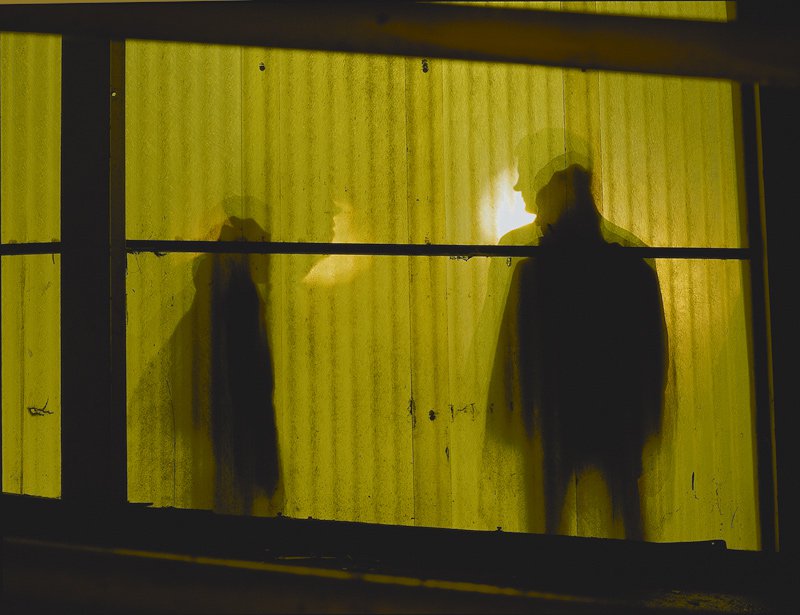
G. Gordon Liddy
SPIED FOR: White House and Committee to Re-Elect the President
VIRGINIA CONNECTION: Radio show was hosted by Fairfax’s WJFK before moving to Maryland in 2001. Daughter Sandy Liddy Bourne ran unsuccessfully for the House of Delegates and serves on the Virginia Board of Agriculture.
DOSSIER: Liddy orchestrated the break-ins to Daniel Ellsberg’s psychiatrist’s office and the headquarters of the Democratic National Committee at the Watergate office building. After the second break-in to Watergate was discovered, Liddy refused to divulge any information to investigators or in court. He was found guilty and sentenced to 20 years.
ULTIMATE FATE: In 1977 President Carter commuted the sentence and released Liddy. The author of several best-selling books, Liddy has been a fixture on the college lecture circuit, sometimes sharing the bill with Timothy Leary. He hosted a nationally syndicated radio talk show until his retirement in 2012.
David Bruce
SPIED FOR: U.S. Office of Strategic Services during World War II
VIRGINIA CONNECTION: Scion of the wealthy Bruce family of Charlotte County, David K.E. Bruce was elected to two terms in the Virginia House of Delegates.
DOSSIER: Shortly before World War II, William “Wild Bill” Donovan recruited Bruce for the incipient Office of Strategic Services, the forerunner of the CIA. During the war he served as the head of OSS for the European Theatre of Operations. Bruce coordinated assistance to the French Resistance in preparation for the D-Day invasion of Normandy. Ultimate Fate: After the war Bruce, now deceased, headed up the Marshall Plan in France. He later served as ambassador to West Germany, Britain and NATO.
Elizabeth Van Lew
SPIED FOR: Union during Civil War
VIRGINIA CONNECTION: Lived and operated in Richmond.
DOSSIER: Born to a prominent family of New York descent, Elizabeth Van Lew openly flaunted her Unionist sympathies in Confederate Richmond. Starting in 1864, Van Lew directed a ring of spies throughout the capital and made an average of three reports a week to the Union high command using ciphers and secret writing. She assisted Federal POWs in planning prison breaks and hid escapees in her attic.
ULTIMATE FATE: While she was shunned by Richmond society after the war, President Grant, who described Van Lew as the most valuable spy in Richmond, named Van Lew as postmaster of Richmond. She died in 1900 and is buried in Richmond at Shockoe Hill Cemetery. Her house was used for a time as a tuberculosis sanatorium and was ultimately demolished.
Belle Boyd
SPIED FOR: Confederate States of America during Civil War
VIRGINIA CONNECTION: Born in Martinsburg, W.V. in what was then Virginia, Boyd performed most of her spying around Front Royal and between Richmond and Washington.
DOSSIER: Many tales have been told about Belle Boyd, and some of them are even true. Undoubtedly she rendered some assistance to Jackson during his valley campaign of 1862, but she likely magnified the significance of her actions after the war. Boyd’s primary employment was the couriering of messages and private letters through the lines to Richmond. She was captured several times during the war but was released each time.
ULTIMATE FATE: Boyd traveled to England in 1864 where she composed her memoirs and embarked upon a moderately successful stage career. She died in 1900 in Wisconsin where she had traveled to give a speech on her wartime exploits.
James Armistead
SPIED FOR: United States during American Revolution
VIRGINIA CONNECTION: Born into slavery in New Kent County.
DOSSIER: In 1781 Armistead volunteered his services to the Marquis de Lafayette before fighting in Yorktown. Lafayette sent Armistead through the lines to volunteer his services to the British commanders and to report back on the disposition of the enemy forces. The British, deceived by Armistead as to his true loyalty and impressed by his acumen, sent him back to the camp of Lafayette to spy for their cause. Armistead’s role as a double agent enabled the Americans to mislead Cornwallis as to the true size of the Allied forces at Yorktown, thereby contributing to the victory.
ULTIMATE FATE: In 1787 the Virginia Legislature granted Armistead his freedom and later awarded him a pension for his service. He died in Richmond in 1830 after changing his name to James Lafayette to honor his former spymaster.
George Kendall
SPIED FOR: Spain, pre-Revolution
VIRGINIA CONNECTION: Member of the first council of the Virginia Company.
DOSSIER: Shortly after arrival in Virginia, Kendall was accused of spreading discontent among the colonists. In short order he found himself confined to the Discovery, then anchored at Jamestown. Shortly thereafter the colony’s blacksmith was sentenced to death for striking a superior during an argument. While bargaining for his life in a dramatic gallows confession, the blacksmith accused Kendall of conspiring to commandeer a vessel and sail for Spain in order to sell intelligence about the newly founded colony to England’s rival. Councilor Kendall, a suspected Catholic, was summarily tried and sentenced to death.
ULTIMATE FATE: Shot at Jamestown.
What Makes A Turncoat?
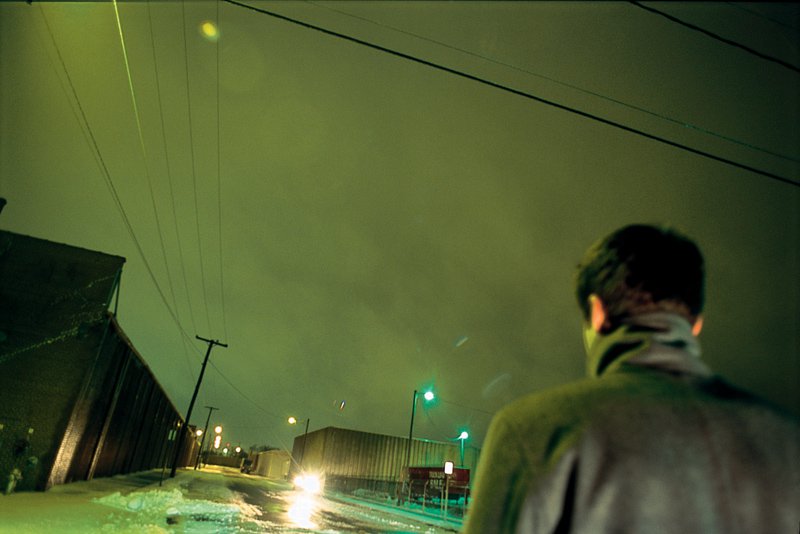
Fairfax author and journalist Pete Earley, an expert on the Ames, Hanssen and Walker spy cases, tells what compels an American to betray his country.
“Why would an American betray his own country?”
The retired KGB General drinking vodka across from me inside the Baltschug Kempinski Hotel in Moscow was blunt. “There is no romance here. It is always for the money.” My dinner guest was arguably the best spymaster the Soviets produced during the Cold War. For an unprecedented 18 years, he personally “handled” the most damaging espionage ring ever to spy against the U.S. —a nasty nest of traitors led by Navy seaman John Walker Jr.
A few months later, the CIA confirmed what the retired general had said. After quizzing a dozen modern-day Benedict Arnolds, all serving long prison sentences, the agency identified “money” as the number one reason why U.S. citizens commit treason.
“Ego gratification” ranked second. FBI turncoat Robert Hanssen (arrested in 2001) felt intellectually superior but was routinely passed over at work. “I’m in the encyclopedia now!” John Walker boasted after his 1985 arrest. CIA traitor Aldrich Ames (caught in 1994) pined for recognition.
Besides motivation, the CIA studied personality traits and discovered a common link among American traitors. They’re self-centered and selfish, willing to exploit everyone around them.
“Did you groom me to be a spy?” Walker’s teenage son asked after his father pressured him to enlist in the Navy specifically to spy for the KGB. “What are the first three digits of your Social Security Number?” Walker replied. The numbers were: 0-0-7, the same as the fictional James Bond’s license to kill. It was a coincidence, of course, but Walker’s impressionable son saw more to it and Walker used his son’s naivety to manipulate him even further.
Ames and Hanssen revealed the names of Western operatives, knowing these CIA and FBI sources would be arrested, imprisoned or worse. To date, 10 Western operatives have been executed.
Betrayal came easily for all three former Virginians, because in the end they were only loyal to themselves.
And what of the three spies’ 30 pieces of silver?
The KGB claimed it was depositing millions in Moscow banks for the spies’ eventual retirement. But that was before they were imprisoned for life. When I asked, the KGB general simply smiled. No doubt, those millions, if they existed, are being used as bait to lure some future traitor across the Judas line.










